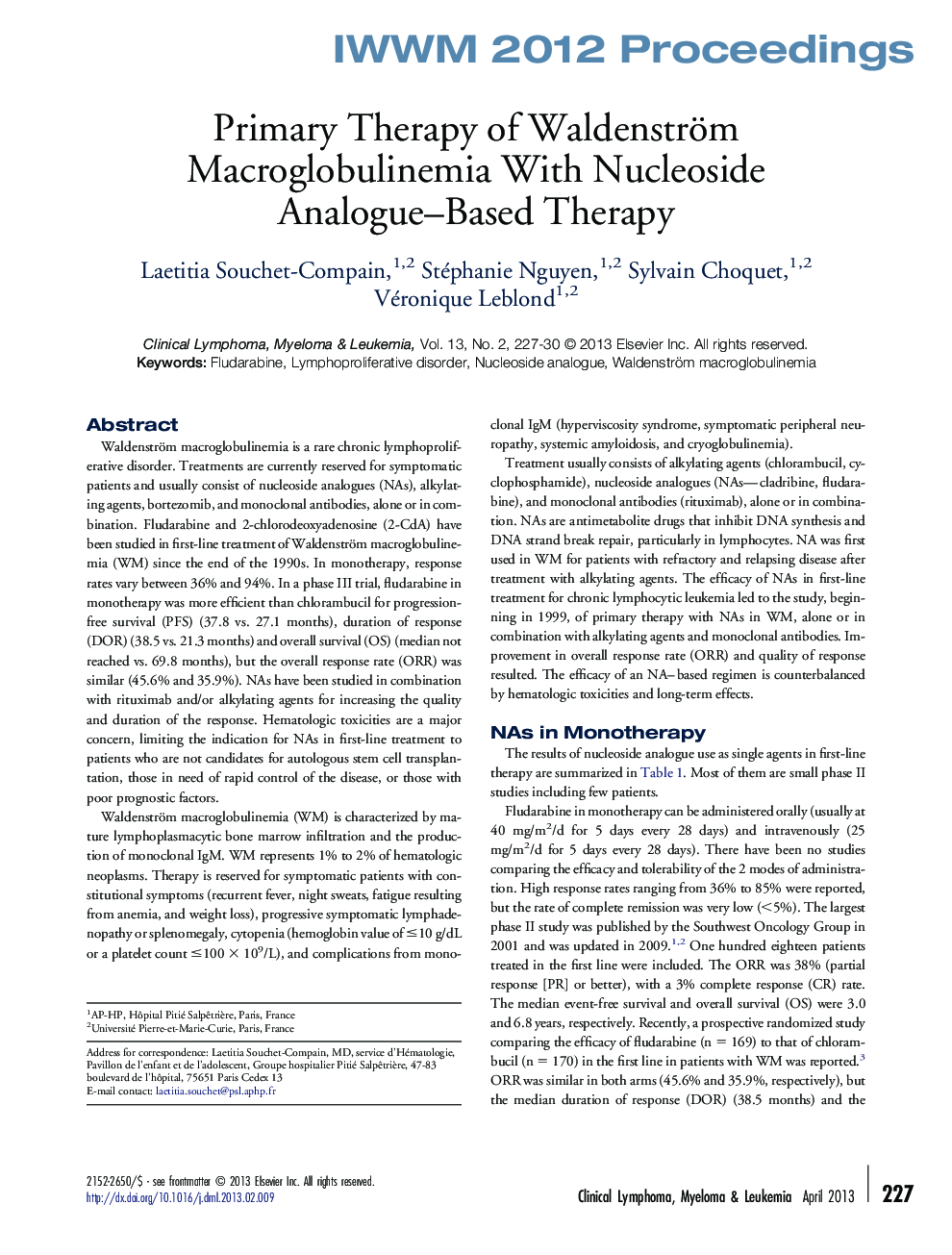| Article ID | Journal | Published Year | Pages | File Type |
|---|---|---|---|---|
| 2754601 | Clinical Lymphoma Myeloma and Leukemia | 2013 | 4 Pages |
Waldenström macroglobulinemia is a rare chronic lymphoproliferative disorder. Treatments are currently reserved for symptomatic patients and usually consist of nucleoside analogues (NAs), alkylating agents, bortezomib, and monoclonal antibodies, alone or in combination. Fludarabine and 2-chlorodeoxyadenosine (2-CdA) have been studied in first-line treatment of Waldenström macroglobulinemia (WM) since the end of the 1990s. In monotherapy, response rates vary between 36% and 94%. In a phase III trial, fludarabine in monotherapy was more efficient than chlorambucil for progression-free survival (PFS) (37.8 vs. 27.1 months), duration of response (DOR) (38.5 vs. 21.3 months) and overall survival (OS) (median not reached vs. 69.8 months), but the overall response rate (ORR) was similar (45.6% and 35.9%). NAs have been studied in combination with rituximab and/or alkylating agents for increasing the quality and duration of the response. Hematologic toxicities are a major concern, limiting the indication for NAs in first-line treatment to patients who are not candidates for autologous stem cell transplantation, those in need of rapid control of the disease, or those with poor prognostic factors.
